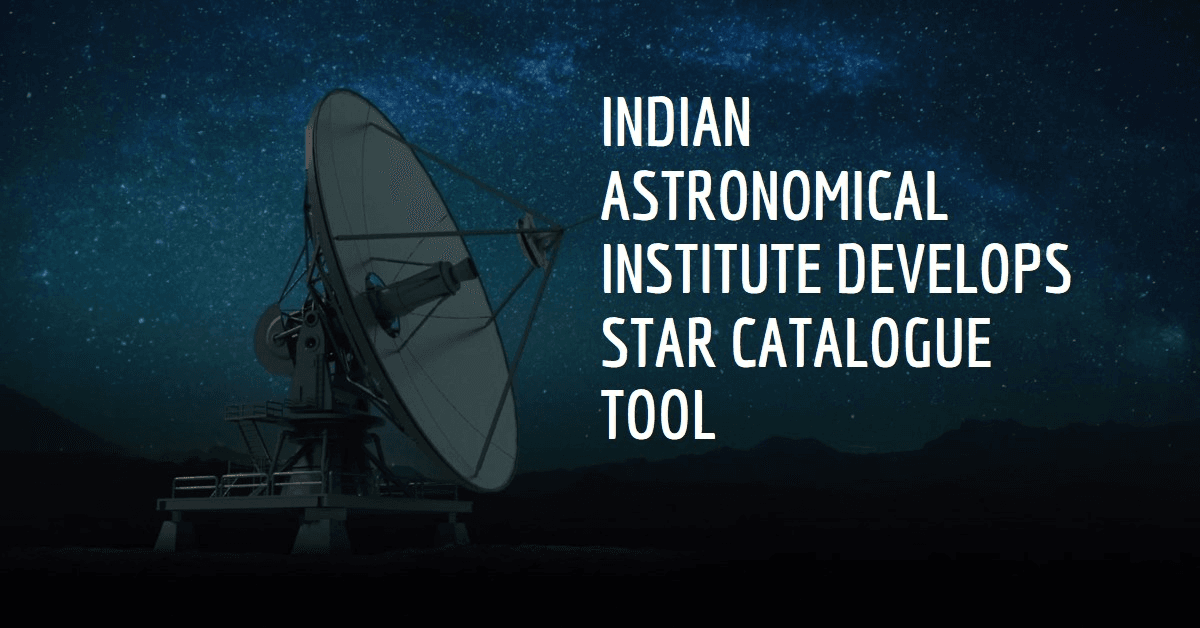A significant advancement in ground-based astronomy comes from the Indian Institute of Astrophysics (IIA), with the development of a critical tool for the Thirty Meter Telescope (TMT). This next-generation telescope, poised to be one of the world’s most powerful, will benefit greatly from the Indian contribution.
Overcoming Atmospheric Hurdles for Crystal-Clear Observations
The sheer size of the TMT will grant it unparalleled access to the depths of space. However, a longstanding challenge for ground-based telescopes is the Earth’s atmosphere. While the twinkling of stars is visually captivating, it arises from atmospheric turbulence that blurs starlight. The TMT employs Adaptive Optics (AO) – a technology that counteracts these distortions in real-time, enabling sharper observations.
The effectiveness of AO hinges on the presence of strategically placed Natural Guide Stars (NGS) that serve as reference points for the system’s adjustments. This is where the innovation from the Indian team comes into play.
Leveraging Near-Infrared Light for Optimal NGS Selection
Existing star catalogues primarily focus on visible light, but near-infrared light is better suited for NGS in AO systems. The Indian-developed online tool addresses this need by predicting the near-infrared brightness of stars based on available data. This allows astronomers to pinpoint the most suitable candidates for NGS across the entire celestial sphere.
The significance of this development lies in the absence of a prior comprehensive infrared star catalogue. Additionally, the open-source nature of the tool makes it accessible to the global astronomical community, fostering collaboration and further refinement.
India’s Strategic Role in Astronomical Exploration
The TMT project is a collaborative effort on a global scale, and India’s involvement extends beyond this instrumental tool. The telescope’s planned location on Mauna Kea, Hawaii, underscores India’s role as a major partner. This contribution strengthens India’s position at the forefront of astronomical research and positions the nation for groundbreaking discoveries alongside international partners.
The innovative tool developed by the IIA paves the way for the TMT to deliver unprecedented clarity in astronomical observations. This advancement will undoubtedly propel our understanding of the universe for years to come.
What is The Thirty Meter Telescope(TMT)?

The Thirty Meter Telescope (TMT) is a planned extremely large telescope (ELT) designed to be a game-changer in the world of astronomy. Here’s a breakdown of its key features:
- Size: As the name suggests, the TMT boasts a massive 30-meter diameter primary mirror, making it one of the largest telescopes ever built. This giant mirror allows it to collect a lot of light, crucial for observing faint objects in the universe.
- Technology: The TMT utilizes cutting-edge technology like adaptive optics to overcome distortions caused by Earth’s atmosphere. This ensures sharper, clearer images from the telescope.
- Science Goals: With its exceptional light-gathering capability and advanced technology, the TMT aims to revolutionize our understanding of the universe. Scientists plan to use it to delve deeper into various areas like:
- Formation and evolution of galaxies
- Properties of dark matter and dark energy
- Exoplanet research, searching for planets beyond our solar system
Current Status: While construction began in 2014, it’s currently on hold due to ongoing discussions regarding the telescope’s proposed location on Mauna Kea, Hawaii, which is culturally significant to some Native Hawaiians.
India’s Role: India is a key partner in the TMT project, collaborating on the design and development. The recent development of a star catalogue tool by the Indian Institute of Astrophysics (IIA) is a significant contribution to optimizing the telescope’s performance.
The Thirty Meter Telescope (TMT) is designed to be a revolutionary tool for astronomers, allowing them to peer deeper into the cosmos than ever before.
Here’s a look at some of the exciting uses planned for the TMT:
- Unveiling the Early Universe: Scientists aim to use the TMT to study the formation of the first stars and galaxies that emerged after the Big Bang. By observing faint, distant objects, they hope to unravel the mysteries surrounding the universe’s earliest moments.
- Galaxy Evolution: The TMT will enable astronomers to track the development of galaxies across vast stretches of time. This will provide insights into how galaxies like our Milky Way formed, grew, and continue to evolve.
- Black Hole Secrets: Supermassive black holes reside at the hearts of most galaxies. The TMT’s powerful observations will shed light on the relationship between these enigmatic objects and their host galaxies.
- Exoplanet Exploration: The search for planets beyond our solar system is a major area of astronomical research. The TMT’s capabilities will allow scientists to not only detect exoplanets but also potentially analyze their atmospheres, helping us understand if these distant worlds could harbor life.
- Fundamental Questions: The TMT’s observations hold the potential to answer some of humanity’s most fundamental questions about the universe. We might gain insights into the nature of dark matter and dark energy, which are thought to make up most of the universe’s mass and energy but remain poorly understood.
In essence, the TMT is like opening a new window to the cosmos, providing astronomers with unparalleled clarity and detail to explore the universe’s vastness and unravel its secrets.
The Thirty Meter Telescope (TMT) boasts several key advantages that will revolutionize astronomical observations:
- Unprecedented Light-Gathering Power: The massive 30-meter primary mirror allows the TMT to collect significantly more light compared to existing telescopes. This translates to observing fainter objects, including those located at incredible distances or with very low luminosity. It’s like having a super-powerful flashlight that illuminates objects previously shrouded in darkness.
- Sharper Images with Adaptive Optics: Earth’s atmosphere distorts starlight, blurring the images captured by telescopes. The TMT employs adaptive optics, a technology that corrects these distortions in real-time. This results in sharper, crisper images, enabling astronomers to study celestial objects with unparalleled detail. Imagine looking through a telescope with perfect clarity, free from atmospheric interference.
- Access to the Early Universe: By observing faint, distant objects, the TMT allows us to peer back in time to the very first moments of the universe. This provides a window into the formation of the first stars and galaxies, offering crucial insights into the universe’s origin and evolution. It’s like traveling back in time through a cosmic time machine.
- Exoplanet Characterization: The TMT’s capabilities extend beyond just detecting exoplanets. It will allow scientists to potentially analyze the atmospheres of these distant worlds. By studying the composition of these atmospheres, we can determine if these exoplanets possess conditions favorable for life, a crucial step in the search for life beyond Earth. It’s like getting a chemical readout of potential alien abodes.
- Unraveling Mysteries: The TMT’s observations hold immense potential for answering fundamental questions about the universe. We might gain a deeper understanding of dark matter and dark energy, which are thought to constitute most of the universe’s mass and energy but remain enigmatic. It’s like having a powerful tool to unlock the universe’s greatest mysteries.
Overall, the TMT represents a significant leap forward in astronomical technology. Its advantages promise to unlock a treasure trove of knowledge about the universe, pushing the boundaries of our understanding and potentially leading to groundbreaking discoveries.
The Future of Astronomy: The Thirty Meter Telescope

The Thirty Meter Telescope (TMT) stands poised to revolutionize our perspective on the universe. With its immense light-gathering power and cutting-edge technology, the TMT promises to unveil the cosmos in ways never before imagined.
From the faintest whispers of the early universe to the potential for life on distant worlds, the TMT holds the key to unlocking a treasure trove of astronomical knowledge.
While challenges regarding its location remain, the scientific community eagerly awaits the day this revolutionary telescope becomes operational. The TMT is a testament to human ingenuity and our enduring quest to understand the vastness and wonder of the cosmos. As we peer through this new window to the universe, the possibilities for discovery are truly endless.
#epicinfinite #epicarticle #epicblog
Do you think the TMT will help us find life on other planets? Let us know in the comments!










